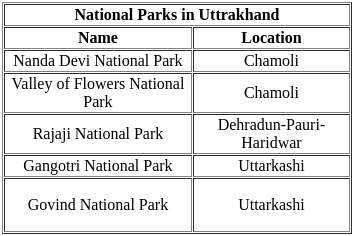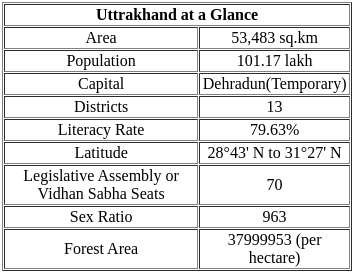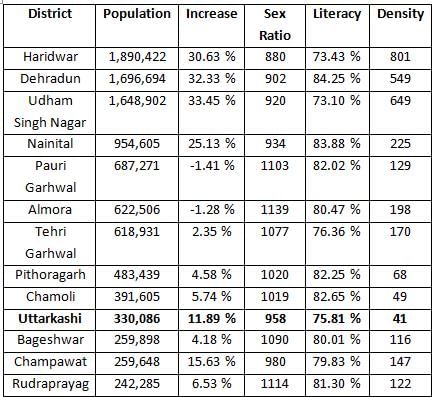UKPSC Prelims Paper 1 Mock Test - 6 - UKPSC (Uttarakhand) MCQ
30 Questions MCQ Test - UKPSC Prelims Paper 1 Mock Test - 6
Which of the following is a state tree of Uttarakhand ?
In which of the following districts 'Corbett National Park' is situated?
What is the primary theme of the tableau representing Uttarakhand in the 2024 Republic Day Parade?
What significant environmental change was observed at Om Parvat in Uttarakhand?
What significant action did Uttarakhand's Chief Minister take to support women's empowerment?
What recent weather phenomenon in Uttarakhand is attributed to climate change rather than a cloudburst?
What is the primary role of the Indo-Tibetan Border Police (ITBP)?
The Agnipath Scheme primarily recruits personnel for which branch of the Indian Armed Forces?
Which organization manages the pilgrimage to Kailash and Lake Mansarovar?
What is the primary reason for the opening of the Valley of Flowers trek in Uttarakhand on June 1, 2024?
What significant event marked the reopening of the Badrinath Temple in 2024?
What recent event occurred at Gangotri Dham in Uttarakhand?
What are the primary causes of forest fires in Uttarakhand as reported in recent incidents?
What was the primary reason for the violence that erupted in Haldwani, Uttarakhand?
What is the primary focus of the Rs 89,000 crore budget unveiled by the Uttarakhand government for the fiscal year 2024-25?
Which among the following places come under UNESCO World Heritage Site's list?
Who demanded the separate Administrative Division for hill area in 1946 A.D. ?
Which of the following district has the lowest population density (Persons per sq km) in Uttarakhand as per the 2011 Census?
Who was the first Param Vir Chakra winner of Uttarakhand?


















